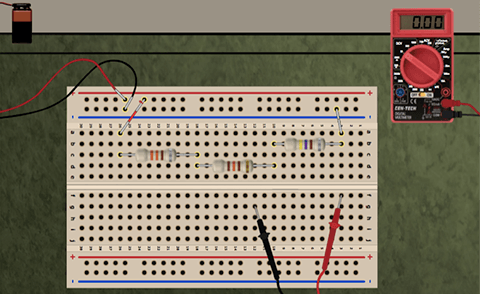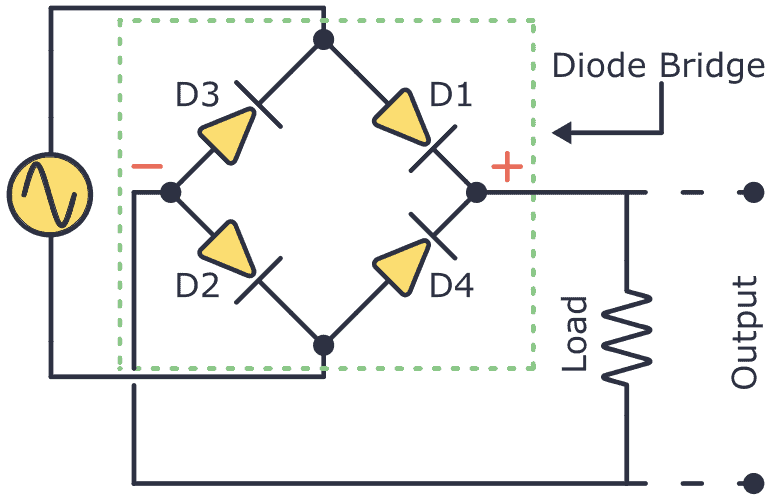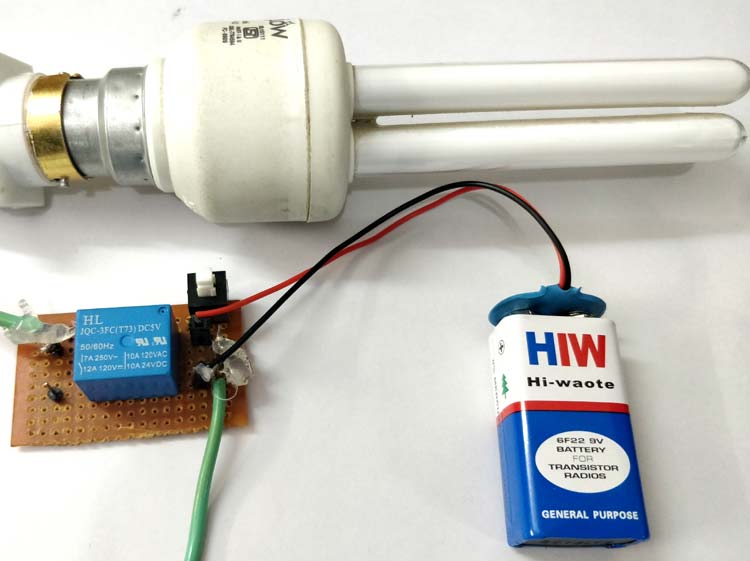2. Inspect Connections
Next, inspect all the connections in the circuit. Loose or disconnected wires can cause a circuit to malfunction. Make sure that all the connections are secure and that there are no signs of damage or corrosion. Pay special attention to solder joints, as these can weaken over time and lead to intermittent connections.
3. Test Components
After checking the power source and connections, the next step is to test the components in the circuit. Start by testing the resistors, capacitors, and diodes. Use a multimeter to check for continuity and proper values. Replace any components that are faulty or out of spec.
4. Tackle the Troubleshooting Process
If the circuit still isn’t working after checking the power source, connections, and components, it’s time to dig deeper into the troubleshooting process. Start by isolating different sections of the circuit and testing each section individually. Check for shorts, open circuits, and incorrect component values.
5. Seek Professional Help
If you’ve tried everything and still can’t figure out what’s wrong with the DC circuit, don’t hesitate to seek professional help. A qualified technician or electrician will have the knowledge and tools necessary to diagnose and repair the issue effectively. It’s better to get help sooner rather than later to prevent further damage to the circuit.
Conclusion
Troubleshooting a DC circuit may seem daunting at first, but with the right approach and tools, you can quickly identify and fix the problem. Remember to check the power source, inspect connections, test components, and follow a systematic troubleshooting process. If all else fails, don’t hesitate to seek professional help. By following these steps, you’ll be well-equipped to tackle any issues that arise with DC circuits.
How to Troubleshoot a DC Circuit
DC circuits are commonly used in a variety of electronic devices, from smartphones to power tools. However, when something goes wrong with a DC circuit, it can be frustrating trying to figure out where the issue lies. Fortunately, troubleshooting a DC circuit doesn’t have to be a daunting task. With some basic knowledge and the right tools, you can quickly identify and fix the problem. In this article, we’ll walk you through the steps to troubleshoot a DC circuit effectively.
1. Check Power Source
The first step in troubleshooting a DC circuit is to check the power source. Make sure that the power supply is turned on and delivering the correct voltage to the circuit. Use a multimeter to measure the voltage at the input of the circuit to ensure that it matches the rated voltage.
2. Inspect Connections
Next, inspect all the connections in the circuit. Loose or disconnected wires can cause a circuit to malfunction. Make sure that all the connections are secure and that there are no signs of damage or corrosion. Pay special attention to solder joints, as these can weaken over time and lead to intermittent connections.
3. Test Components
After checking the power source and connections, the next step is to test the components in the circuit. Start by testing the resistors, capacitors, and diodes. Use a multimeter to check for continuity and proper values. Replace any components that are faulty or out of spec.
4. Tackle the Troubleshooting Process
If the circuit still isn’t working after checking the power source, connections, and components, it’s time to dig deeper into the troubleshooting process. Start by isolating different sections of the circuit and testing each section individually. Check for shorts, open circuits, and incorrect component values.
5. Seek Professional Help
If you’ve tried everything and still can’t figure out what’s wrong with the DC circuit, don’t hesitate to seek professional help. A qualified technician or electrician will have the knowledge and tools necessary to diagnose and repair the issue effectively. It’s better to get help sooner rather than later to prevent further damage to the circuit.
Conclusion
Troubleshooting a DC circuit may seem daunting at first, but with the right approach and tools, you can quickly identify and fix the problem. Remember to check the power source, inspect connections, test components, and follow a systematic troubleshooting process. If all else fails, don’t hesitate to seek professional help. By following these steps, you’ll be well-equipped to tackle any issues that arise with DC circuits.
2. Inspect Connections
Next, inspect all the connections in the circuit. Loose or disconnected wires can cause a circuit to malfunction. Make sure that all the connections are secure and that there are no signs of damage or corrosion. Pay special attention to solder joints, as these can weaken over time and lead to intermittent connections.
3. Test Components
After checking the power source and connections, the next step is to test the components in the circuit. Start by testing the resistors, capacitors, and diodes. Use a multimeter to check for continuity and proper values. Replace any components that are faulty or out of spec.
4. Tackle the Troubleshooting Process
If the circuit still isn’t working after checking the power source, connections, and components, it’s time to dig deeper into the troubleshooting process. Start by isolating different sections of the circuit and testing each section individually. Check for shorts, open circuits, and incorrect component values.
5. Seek Professional Help
If you’ve tried everything and still can’t figure out what’s wrong with the DC circuit, don’t hesitate to seek professional help. A qualified technician or electrician will have the knowledge and tools necessary to diagnose and repair the issue effectively. It’s better to get help sooner rather than later to prevent further damage to the circuit.
Conclusion
Troubleshooting a DC circuit may seem daunting at first, but with the right approach and tools, you can quickly identify and fix the problem. Remember to check the power source, inspect connections, test components, and follow a systematic troubleshooting process. If all else fails, don’t hesitate to seek professional help. By following these steps, you’ll be well-equipped to tackle any issues that arise with DC circuits.
How to Troubleshoot a DC Circuit
DC circuits are commonly used in a variety of electronic devices, from smartphones to power tools. However, when something goes wrong with a DC circuit, it can be frustrating trying to figure out where the issue lies. Fortunately, troubleshooting a DC circuit doesn’t have to be a daunting task. With some basic knowledge and the right tools, you can quickly identify and fix the problem. In this article, we’ll walk you through the steps to troubleshoot a DC circuit effectively.
1. Check Power Source
The first step in troubleshooting a DC circuit is to check the power source. Make sure that the power supply is turned on and delivering the correct voltage to the circuit. Use a multimeter to measure the voltage at the input of the circuit to ensure that it matches the rated voltage.
2. Inspect Connections
Next, inspect all the connections in the circuit. Loose or disconnected wires can cause a circuit to malfunction. Make sure that all the connections are secure and that there are no signs of damage or corrosion. Pay special attention to solder joints, as these can weaken over time and lead to intermittent connections.
3. Test Components
After checking the power source and connections, the next step is to test the components in the circuit. Start by testing the resistors, capacitors, and diodes. Use a multimeter to check for continuity and proper values. Replace any components that are faulty or out of spec.
4. Tackle the Troubleshooting Process
If the circuit still isn’t working after checking the power source, connections, and components, it’s time to dig deeper into the troubleshooting process. Start by isolating different sections of the circuit and testing each section individually. Check for shorts, open circuits, and incorrect component values.
5. Seek Professional Help
If you’ve tried everything and still can’t figure out what’s wrong with the DC circuit, don’t hesitate to seek professional help. A qualified technician or electrician will have the knowledge and tools necessary to diagnose and repair the issue effectively. It’s better to get help sooner rather than later to prevent further damage to the circuit.
Conclusion
Troubleshooting a DC circuit may seem daunting at first, but with the right approach and tools, you can quickly identify and fix the problem. Remember to check the power source, inspect connections, test components, and follow a systematic troubleshooting process. If all else fails, don’t hesitate to seek professional help. By following these steps, you’ll be well-equipped to tackle any issues that arise with DC circuits.



